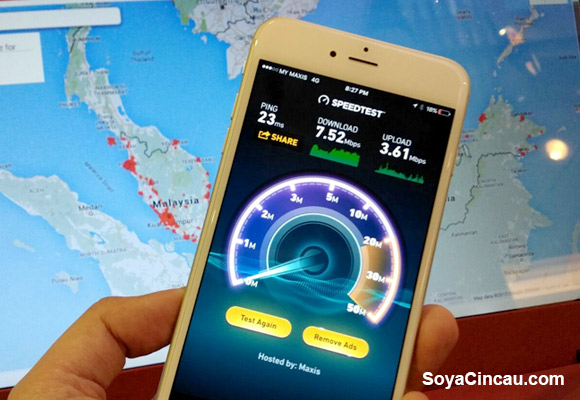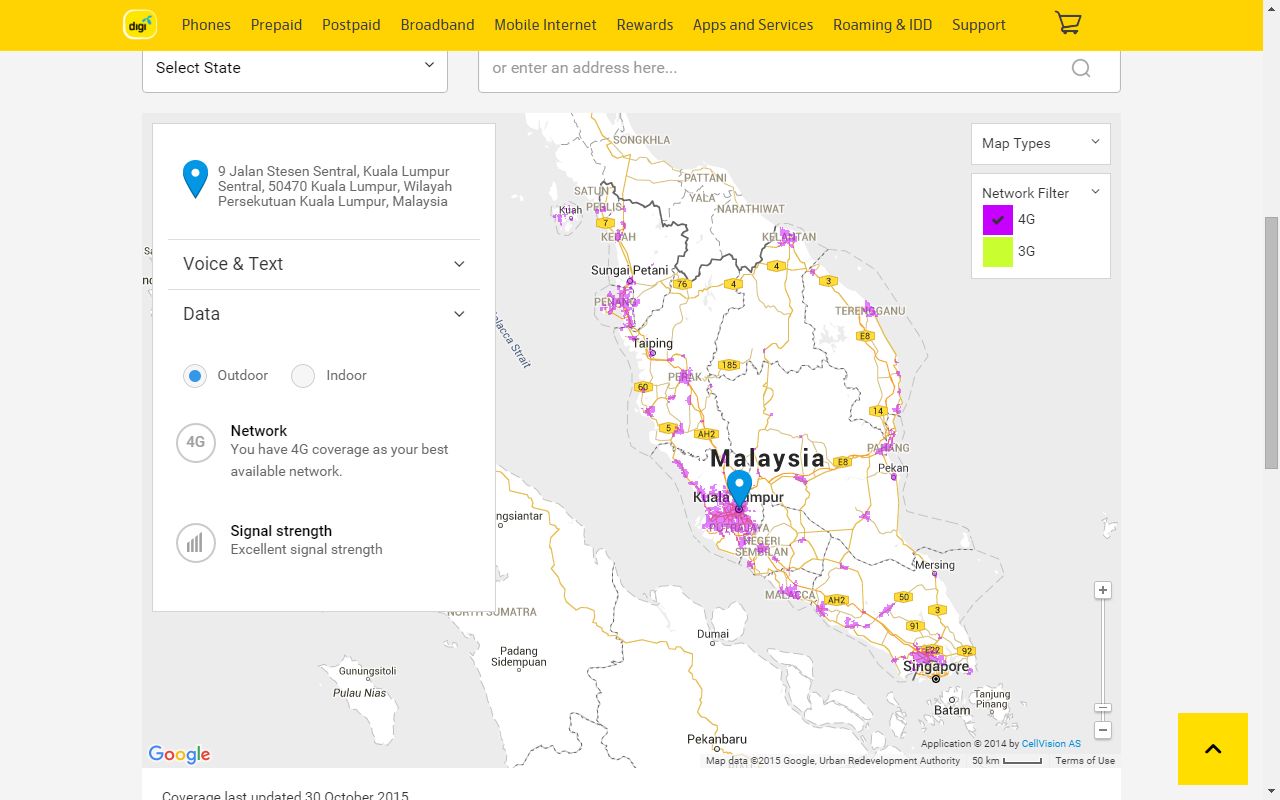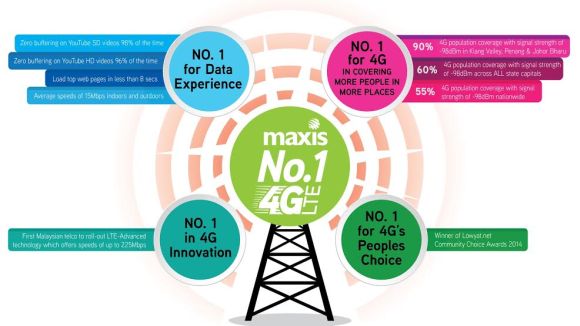Playing with Pandora’s box has its ramifications and once you release statements/claims, you’d better be ready to face your critics. Following the onslaught of who’s the “best”, “widest” and “fastest” 4G LTE network, Maxis aims to put this issue to bed by releasing company data on how they classify their 4G LTE network. Moreover, the green coloured telco has also proposed to have a forum with two of its competitors to talk about the state of 4G LTE in Malaysia.
Getting the ball rolling on a pressing issue that has left Malaysian baffled by both telcos claims (Digi and Maxis), this could mean that consumers will at the end gain more out of this. The initiator of all this has issued an open invitation to any member of the public to prove them wrong on their “widest” 4G LTE network; they also hope Digi and Celcom follow suit.

Setting the date for the 23rd of November, Maxis hopes that this platform will allow all three networks to have their own telecommunications engineers to talk about how they gauge their coverage. And at the end of the day, Maxis claims that they want to do this for consumers; evidently to let us “have a fair basis for choosing”.
Strangely, Maxis has left out the 4th major player in the market, U Mobile. Possibly since the company isn’t publicly listed, otherwise we’d best not speculate further. While everyone claims to provide the “widest” 4G LTE, we’re still questioning if they’ve diverted their attention to problems that their customers are facing everyday – even in the heart of the Klang Valley.
Our readers have been very open about their experiences on their networks, with some stating that there are service blind spots in popular landmarks and areas around the major cities. Silly if you think of it really, the fact that their customers in their key market areas are facing issues and they want to go on record being the “widest”, “fastest”, and “best” network.
Previously, we talked about what all these bold titles mean to consumers, you can check it out here. But if you’re really into these figures that Maxis has published, they are listed below:
Zero buffering 98% of the time on YouTube SD (no clarification what standard definition is to them)
Zero buffering 96% of the time on YouTube HD (no clarification on what high definition is to them)
Top web pages (Google and Facebook) load fully in less than 8 seconds
Average 4G LTE speeds exceed 15Mbps at all hours, both indoor and out
Ultra-fast speeds of up to 225Mbps in areas where Maxis has already rolled out LTE-Advanced technology, the first Malaysian telco to do so
90% 4G LTE population coverage signal strength of -98dBm in Klang Valley, Penang and JB
60% 4G LTE population coverage with minimul signal strength of -98dBm across all state capitals
55% 4G LTE population coverage with minimum signal strength of -98dBm nationwide
*Do note that aside from the first three lines, no 3rd party testing has been conducted to verify the “statements” by Maxis above*
It’s easy to talk numbers and standards but do they really reflect in real-life situations? We’ve tried testing Maxis’ network at KLCC, on a weekday night and from the photo below, you can see we only managed 7Mbps download speeds, so what gives?

We now throw it back to the telcos, step up your game, stop all the bickering and maintain your network coverage (and speed) across all your services – no matter 2G, 3G or 4G. We want a consistent experience, it doesn’t matter to us if you’re the widest if you can’t deliver in reality.
There has been no official statement from either Digi and Celcom yet (but be fair to them, it’s a public holiday today). Once they’ve replied we’ll keep everyone updated. It’ll be a great thing to see our cellular providers meet in a neutral setting, we hope that all three will decide to have an unbiased moderator and that the public will be allowed to grill them on their gripes. If you have any recommendations on who should oversee this open forum, let us know in the comments below.









